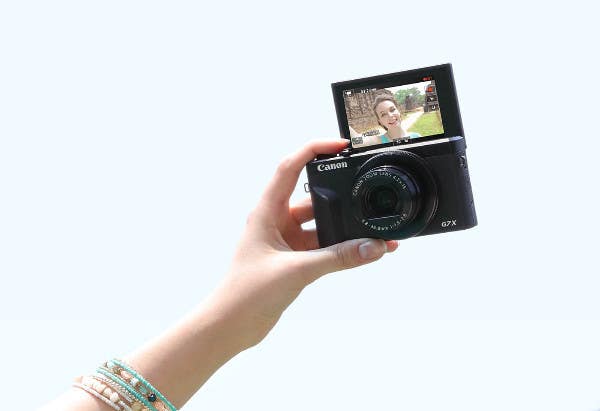Canon G7X Mark II vs. Mark III: What Are The Differences?
The Canon Powershot G7X Mark II and Mark III have earned a devoted fan club for their compact size, powerful performance, and impressive image quality. If you're considering joining the club but feeling lost between the Mark II and Mark III versions, take a deep breath – we're here to guide you through the labyrinthine specifications.
Quick Pros & Cons of the Canon G7X Mark II & Mark II
First off, let’s take a look at the pros and cons of each of these Canon models. Remember that the only thing that makes one model better is if it suits your needs as a photographer. Budget, the type of images or footage you capture, connectivity, and battery life are aspects you might want to consider.
Canon G7X Mark II Pros:
- More affordable
- Excellent image quality and versatility
- Full HD video for everyday videography
- Compact and portable


Canon G7X Mark II Cons:
- No 4K video
- Slower autofocus in low light
- The touchscreen is not as responsive as the Mark III
- Slightly outdated features
- No built-in viewfinder (same for Mark III)


Canon G7X Mark III Pros:
- Stunning 4K video for aspiring filmmakers
- Improved autofocus with subject tracking and eye detection
- Faster Bluetooth for seamless connectivity
- More responsive touchscreen with touch-drag autofocus
Canon G7X Mark III Cons:
- More expensive
- 4K footage requires powerful editing software
- Battery life might drain slightly faster
- No built-in viewfinder (same for Mark II)
Twinning Core Specifications
Resolution and Sensor
Both cameras sport a 20.1MP 1-inch CMOS sensor, a significant upgrade from the previous models' smaller sensors. This means sharper, more detailed images, perfect for capturing moments in vibrant clarity.
Zoom Lens
Both models boast the same versatile 24-100mm f/1.8-2.8 zoom lens, ideal for everything from wide landscapes to portraits. This consistent aperture throughout the zoom range is a significant advantage, eliminating the need to adjust settings as you frame your shot.


Where the Mark III Shines: Video Prowess


The Mark III introduces stunning 4K 30fps video recording, a significant jump from the Full HD capabilities of the Mark II. This opens doors to smooth, cinematic footage with exceptional detail, making it a great camera for filmmakers and video content creators.
That being said, the Mark II still captures impressive high-quality videos for its compact size and affordable price tag, and does offer Full HD at 60fps which is ideal for capturing fast-paced action.
Autofocus
Both cameras boast Canon's DIGIC 8 processor for fast and accurate autofocus. However, the Mark III takes it further with Dual Pixel CMOS AF, offering subject tracking and eye detection even in low-light conditions. This is a game-changer, as your focus lands consistently and precisely where you want it.
Viewfinder and Display
Neither model has a built-in viewfinder, which might be a slight compromise for some users accustomed to traditional DSLRs. However, both feature high-resolution 3.0-inch tilting touchscreens, perfect for composing your shots and reviewing your work. The Mark III's touchscreen boasts improved responsiveness and touch-drag autofocus, making it even more intuitive to use.
Connectivity and Sharing
Both cameras offer Wi-Fi and Bluetooth connectivity for easy pairing with your smartphone or tablet. The Mark III boasts upgraded Bluetooth 4.2 for faster and more stable connections, ideal for instant sharing or remote camera control. The Canon Camera Connect app provides convenient image transfer, remote shooting, and even live streaming capabilities – a fun addition for social media enthusiasts.
Battery Life
Both cameras use the same NB-13L battery, offering a decent life of around 320 shots per charge. However, the Mark III's improved image processor and 4K video recording could drain the battery slightly faster. Consider carrying a spare if you plan on extended shooting sessions.
Verdict: The Right Canon G7X for You
For casual photographers, the Mark II is still a brilliant option. It delivers excellent image quality, a versatile lens, and Full HD video, all at a more attractive price point.
For videographers and tech enthusiasts, the Mark III is the clear winner. The 4K video recording, improved autofocus, and faster connectivity make it an exceptional vlogging camera and a compelling choice for those who take their digital storytelling seriously. But do consider your workflow and video editing software: if you're not comfortable editing 4K footage, the Mark II might be a better fit for you.
Featured Products
It’s Time to Mark Your Moments
Ultimately, the best choice is the one that fits your budget and creative aspirations. Both the Canon G7X Mark II and Mark III are exceptional compact cameras, so grab the one that speaks to you and start creating.
Remember, getting out there and shooting is the most important factor. With either the Mark II or Mark III, you'll have a powerful tool to document your adventures and share your own perspective with the world. For more advice on how to use your new camera, check out our guide to the Canon G7X settings, and browse Ted’s blog for more photography tips.
Next Post
Sony APS-C Mirrorless Camera Roundup - 2024
Previous Post
Canon EOS R APS-C Mirrorless Camera Roundup



